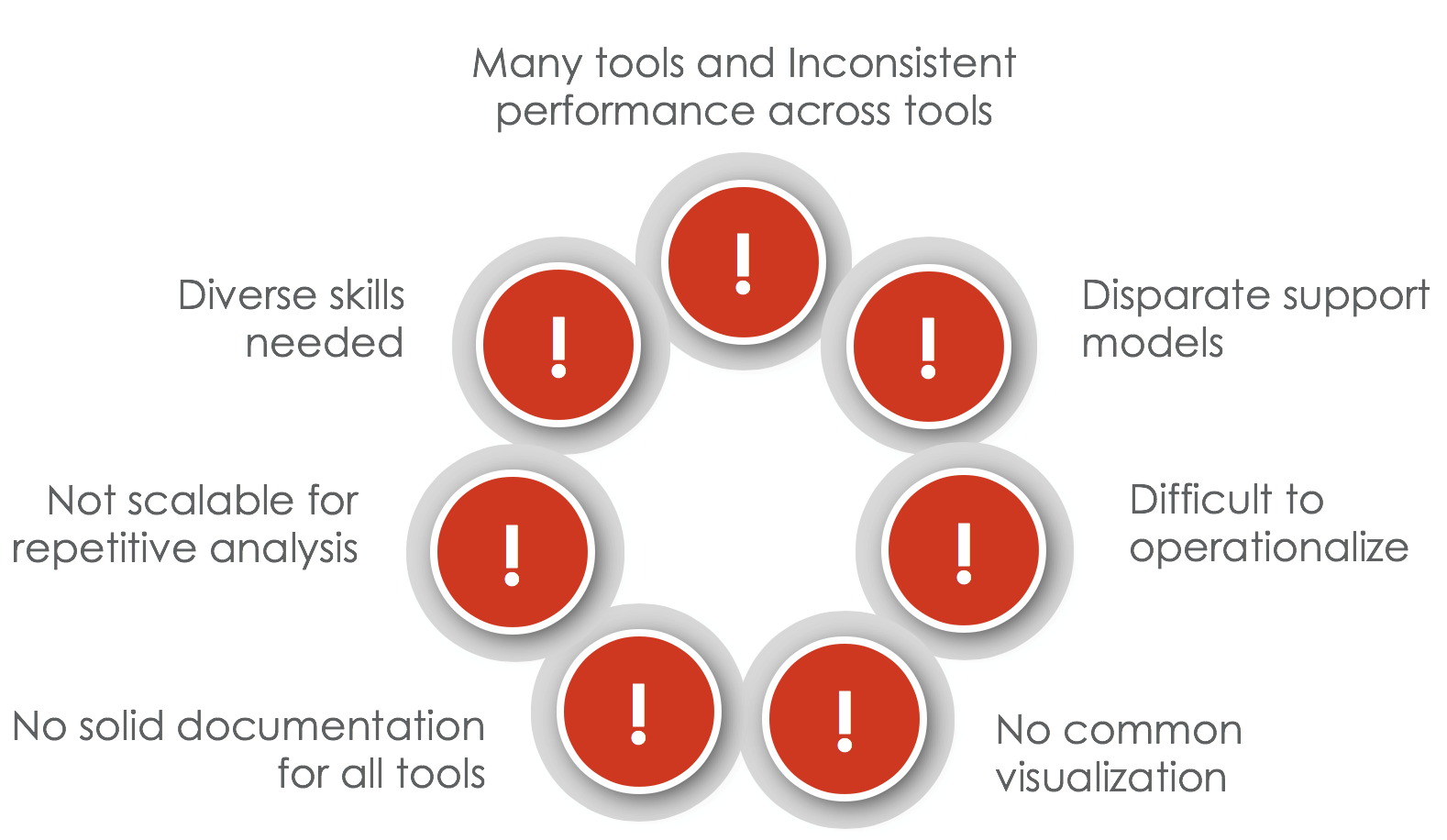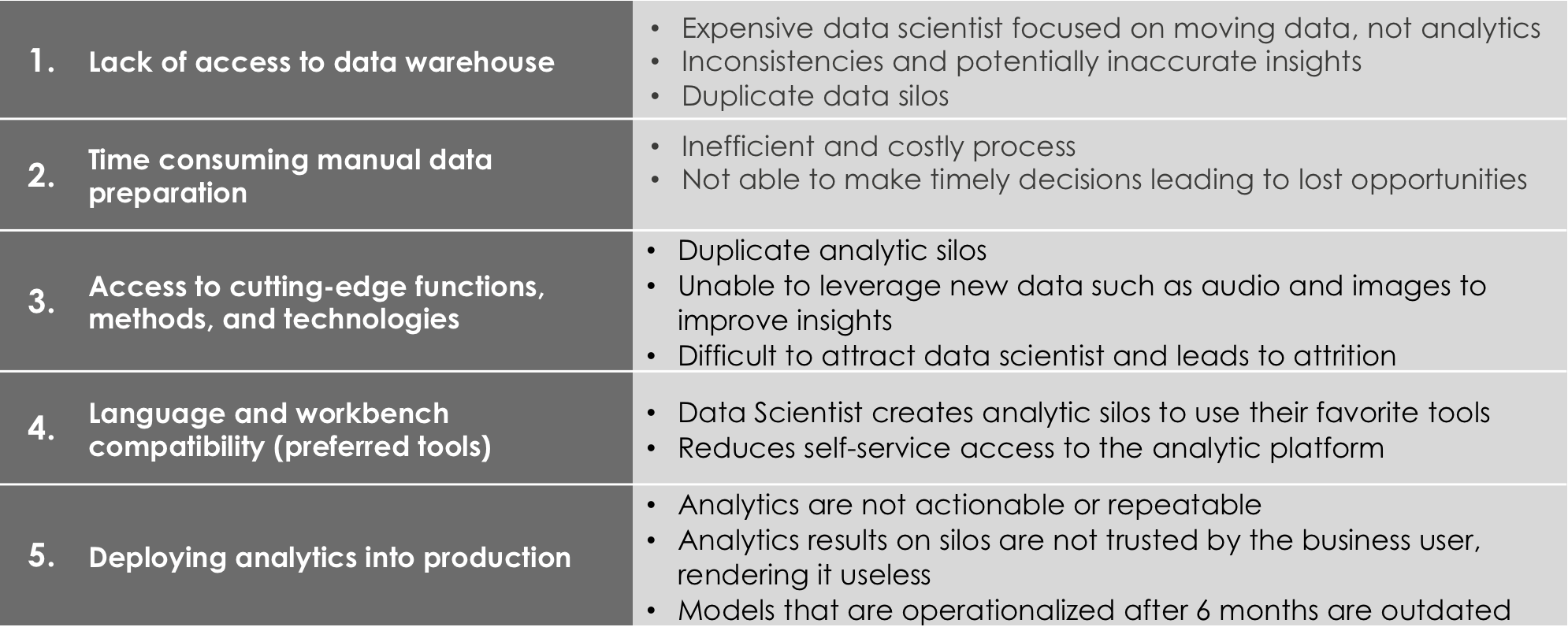There are many things that I am thankful for in September: The start of both football seasons (college and professional), the crisp autumn days (all 14 minutes of it in California), the gradual emergence of true baseball rivalries (Go Phillies), and this year, in particular, the first release of the
Teradata Analytics Platform. While it may seem a strange thing to juxtapose a pioneering piece of technology with things that are life affirming, they evoke similar feelings in me.
Let me put a few different hats on you in an exercise in which I hope to mirror different realistic experiences:
- You are a retailer who is interested in quickly determining which customers are likely to stop buying your products and which ones of the high value churners to target to ensure their retention.
- You are a heavy industrial equipment services manager who is interested in ensuring expensive pieces of machinery never go out of commission during critical production runs.
- Your boss heads up the office of the CFO in a large bank and you are responsible for identifying transactional peculiarities that could be fraudulent while also ensuring that non-standard transactions that are legitimate are not flagged.
- You are the chief of a large medical chain and your hospital needs to scan the hundreds of thousands of documents containing medical assessments to quickly identify previous diagnostic patterns on new patients.
- You are the new chief of networks of a large global telecom that prides itself on impenetrable security and delivering an uptime experience of 100% and your job is to ensure that new threats don’t emerge while ensuring peak customer satisfaction.
…and there are many more hats across many verticals that you could don. Each of these use cases, when properly addressed, has a serious impact on every conceivable business metric that companies swear by. The question is, how do we address them? The answer is deceptively simple: Analytics, of course. Ah, but it ain’t easy. Let’s see why.
The Dark Side of the Analytics Moon

With the most sheepish of excuses due to Pink Floyd (I have to make a music reference in all that I write), I’ll quickly move on and make the point that doing Analytics is not easy. The graphic below is illustrative of my point:
Enabling legitimate analytics, in today’s exploding anarchy of data “affluenza” that enterprises regularly find themselves in, requires a harmonious marriage across data silos, analytic functions, visualization tools, operationalization schemes, data scalability, system performance, and multi-persona compatibility. I regularly talk to lot of enterprise customers and the following concerns are regularly heard:

These challenges are not only institutionally debilitating in that they significantly hamper the ability to address critical business problems but also contribute quite heavily to turnover, superfluous cost outlays on niche tools, and a general stampede towards competitive mediocrity.
…and that is where the Teradata Analytics Platform makes its entry!
Why Teradata Analytics Platform?
It bugs me no end when people ask me, in half affirmation of their prior beliefs sometimes, if Teradata is a storage company. After swallowing hard a few times, and kicking myself for not doing as good a job as I could be in disabusing people of that notion, I make it a point to illustrate Teradata’s long history in the analytics world. The culmination, till date, is the Teradata Analytics Platform.Simply put, here are the feature highlights of the platform:
- Pre-built SQL, Machine Learning and Graph Engines that come pre-packaged with multi-genre analytic functions/algorithms (e.g., Statistics, Machine Learning, Text & Sentiment Extraction, Graph Centrality, Decision Trees, Dataprep, Geospatial & Temporal).
- Embedded persistent MPP storage (Teradata Database) and a high-speed data fabric that ensures connectivity to external data sources (e.g., Hadoop, Spark, Enterprise Data Warehouses).
- Multi-form factor availability with license portability across platforms. These include Teradata optimized hardware (Intelliflex), Public Cloud (e.g., AWS, Azure), Private Cloud (Intellicloud).
- Analytic engine extensibility to include open source engines such as Tensorflow and Spark
- Choice of Data Science languages such as SQL, Python, R and tools such as Teradata SQL Studio, Jupyter Notebooks, R Studio, Teradata AppCenter and more.
- A highly scalable environment with analytic engines built in Docker containers meant for extreme flexibility and performance on any data volume – regardless of whether it is installed on the cloud or on-premises.
In a nutshell, the Teradata Analytics Platform is a software that comes with its own integrated analytic functions that can be executed across preferred data science languages and tools across multiple platforms and by diverse analytics personas on any data type at volume.
Now, you tell me, as a wearer of multiple analytics hats in your company, don’t you feel a lot more secure in your and your team’s ability to successfully address your unique business challenges with this platform?
Delivering the promise of analytics driven decision making
If it is not clear by now, I will aver again. With an analytics underpinned decision-making ethos, life is better. The Teradata Analytics Platform delivers on this promise by ensuring that analytics is not the favored domain of the fortunate few. Just about anyone in the organization who wants to look at the data – Data Scientists, Business Analysts, Citizen Data Scientists, Lines of Business Managers, and yes, the C-Suite – can do so without the need for deep reserves of technical knowhow. The platform has been created precisely to enable analytically inclined individuals to experience the power of operationalizing insights by highly intuitive user interfaces, widgets, apps, and pre-coded functions to run a variety of analysis. As an example, a retailer can pull in her website chat data to understand prevailing sentiments and see the results in a word cloud.
Or, a banker can look at his customer’s journeys across multiple channels and see which one contributes the most to a specific event (e.g., Mortgage application). There are more such examples of implementations that I have been a part of. This ability to not just deliver insights but also to operationalize it in near real time is what makes the analytics platform truly versatile and heralds an exciting future with more to come for our customers and for Teradata.
I thank you for reading so far. Contact me anytime should you need a demo or want to be part of a Data Science Workshop that we have successfully conducted on the Analytics Platform,
By the way, there is no dark side of the moon. Matter of fact, it is all dark!
Sri Raghavan is a Senior Global Product Marketing Manager at Teradata and is in the big data area with responsibility for the AsterAnalytics solution and all ecosystem partner integrations with Aster. Sri has more than 20 years of experience in advanced analytics and has had various senior data science and analytics roles in Investment Banking, Finance, Healthcare and Pharmaceutical, Government, and Application Performance Management (APM) practices. He has two Master’s degrees in Quantitative Economics and International Relations respectively from Temple University, PA and completed his Doctoral coursework in Business from the University of Wisconsin-Madison. Sri is passionate about reading fiction and playing music and often likes to infuse his professional work with references to classic rock lyrics, AC/DC excluded.
View all posts by Sri Raghavan